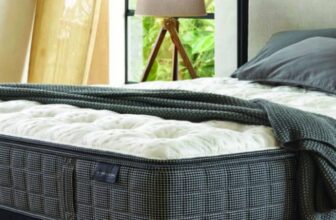
5 Dos And 4 Don’ts Of Setting Up Your Home AV System

Building your dream home audiovisual (AV) system can be an exciting journey full of possibilities. With today’s brilliant high-definition televisions, who wouldn’t want an awesome home theater setup?
Before rushing into equipment purchases, though, familiarize yourself with some essential tips to ensure your gear runs smoothly together. Consider essential factors ranging from connection cables to future expandability to smart home integration when planning your installation.
With strategic thinking, you can fashion an incredible entertainment hub perfectly tailored to your lifestyle dreams. Let’s explore these ten dos and don’ts for getting home AV installation right the first time.
Do Use Quality Cabling
You’re investing in cutting-edge gear to deliver pristine sights and sounds. Don’t undermine it all with low-quality audio, video, and speaker cables prone to interference or signal loss over short distances.
Premium gold-plated, oxygen-free copper cables guarantee maximum throughput of crystal clear signals. Test cable runs first to avoid damaging walls and floors when installing in-wall or ceiling speakers in your permanent setup.
Don’t Skimp On The Display
When planning your setup, allocate a sizable budget for the visual centerpiece—your high-resolution, ultra HD television. In tandem with your AV receiver and media devices, the TV transforms into an immersive entertainment portal.
Go big with 65 inches or larger screens to fill your field of view, especially if sitting 8-12 feet away. Likewise, don’t overlook image attributes like contrast ratios, refresh rates, and viewing angles that affect quality.
Do Sweat The Small Stuff
You spend plenty of time calibrating big-ticket items like displays and speakers for optimal operation. But small details also deserve attention. For example, obscure signal splitters used to route AV signals can impede signal integrity if not rated for the task.
Something as mundane as tangled cables behind racks can also prevent efficient heat dissipation, which leads to premature device failures. Sweat that small stuff now to avoid future headaches!
Don’t Attempt Complex Wiring Yourself
Sure, snaking power cables under the carpet or drilling through walls seems manageable as a DIY project until you end up damaging expensive media components from wiring errors. Unless you have technical expertise, let certified installers handle complex wiring behind walls and under floors.

Consult experts to incorporate Dolby Atmos ceiling or in-wall speakers properly into room aesthetics. Getting it right first prevents costly reworks and protects gear.
Do Think Future-Proof
While it’s enticing to save money on AV gear by opting for entry-level models, they soon feel outdated as capabilities advance. For longevity, choose solid mid-range and higher-end components.
For example, buy an AV receiver with the latest HDMI 2.1 to accommodate next-gen gaming consoles and 8K video. Having more power, ports, and channels than you currently need leaves room for seamlessly adding the next big display, speaker, or source.
Don’t Ignore Ergonomics
Once fully wired up, consider fine-tuning everything for optimal ease of use by all family members. For instance, mount the TV at an appropriate height so eye levels comfortably align with the center.
Make displays swivel or tilt for ideal viewing angles, whether lounging casually on the couch or seated formally at a distance. Adjust source components within accessible reach so you don’t strain when swapping discs. Good ergonomics promotes usage and enjoyment!
Do Personalize Your Smart Home
Today’s sophisticated AV receivers double up as smart home hubs for convenience. With voice control or smartphone apps, operate AV gear and set scenes, ambiances, and personalized playlists to match activities, whether working out, entertaining, or movie night.
Also, include smart lighting and climate accessories to start building your tailor-made smart home ecosystem. Expand possibilities further by programming routines for one-touch activation as you walk into a room.
Don’t Overlook Future Servicing
Sophisticated processors and moving parts inside modern media gear mean they’ll eventually need professional servicing. So, don’t permanently seal them away inside cabinets!
While nicely hiding devices behind cabinet doors works visually, make sure backs or sides open up easily for technicians. Have sufficient ventilation for convection, or else overheating electronics will fail prematurely.
Do Centralize Your AV Rack
Determine an optimal, ventilated central spot like a hallway closet to set up your networked AV receiver/processor, Blu-ray player, and game consoles, as well as cable/streaming boxes. This consolidated media hub should connect conveniently to your displays via hidden conduits.

Having centralized access makes loading discs and game discs easy while enabling you to tweak settings. Place hot-swapping devices on open shelves for quick changes when required.
Final Thoughts
With some strategic planning complemented by quality gear, you can fashion an incredible home theater or media room perfectly suited to your lifestyle. Keep these dos and don’ts handy as a checklist while installing your system.
Feel free to tweak ideas to match your space constraints, budget, and tech aspirations. Most importantly, have fun setting up a stellar AV system that delivers your home entertainment dream!



















































































